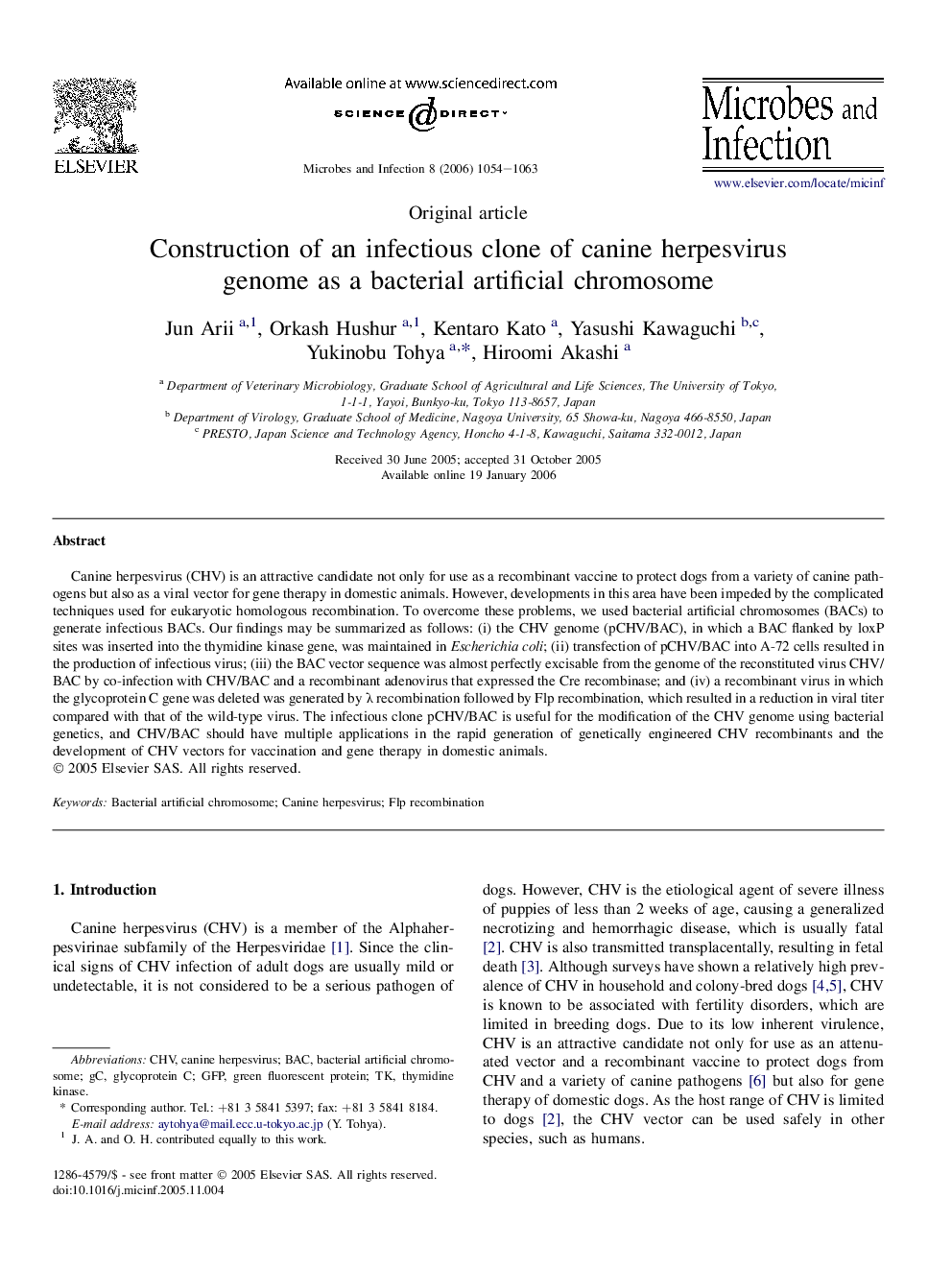| Article ID | Journal | Published Year | Pages | File Type |
|---|---|---|---|---|
| 3416072 | Microbes and Infection | 2006 | 10 Pages |
Canine herpesvirus (CHV) is an attractive candidate not only for use as a recombinant vaccine to protect dogs from a variety of canine pathogens but also as a viral vector for gene therapy in domestic animals. However, developments in this area have been impeded by the complicated techniques used for eukaryotic homologous recombination. To overcome these problems, we used bacterial artificial chromosomes (BACs) to generate infectious BACs. Our findings may be summarized as follows: (i) the CHV genome (pCHV/BAC), in which a BAC flanked by loxP sites was inserted into the thymidine kinase gene, was maintained in Escherichia coli; (ii) transfection of pCHV/BAC into A-72 cells resulted in the production of infectious virus; (iii) the BAC vector sequence was almost perfectly excisable from the genome of the reconstituted virus CHV/BAC by co-infection with CHV/BAC and a recombinant adenovirus that expressed the Cre recombinase; and (iv) a recombinant virus in which the glycoprotein C gene was deleted was generated by λ recombination followed by Flp recombination, which resulted in a reduction in viral titer compared with that of the wild-type virus. The infectious clone pCHV/BAC is useful for the modification of the CHV genome using bacterial genetics, and CHV/BAC should have multiple applications in the rapid generation of genetically engineered CHV recombinants and the development of CHV vectors for vaccination and gene therapy in domestic animals.
